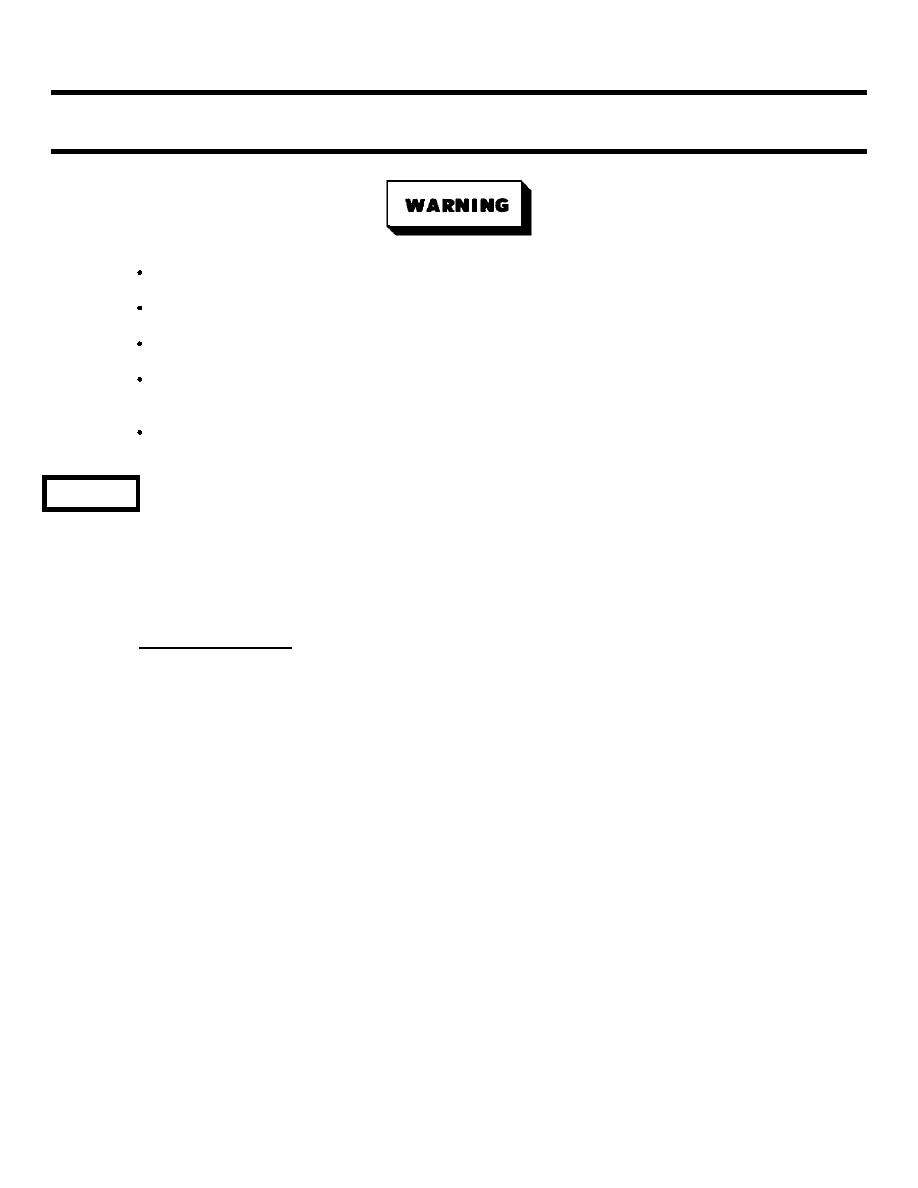
| Tweet |

Custom Search
|
|

|
||
 TM 55-1905-220-14-11
5-147. REFRIGERATOR/FREEZER - MAINTENANCE INSTRUCTIONS. (Continued).
REFRIGERANT UNDER PRESSURE is used in operation of this equipment.
DEATH or severe injury may result if you fail to observe safety precautions.
Avoid prolonged breathing of Freon gas.
If gas leaks develop, avoid direct skin contact. Wear thermal protective gloves and goggles in any
situation where skin-eye contact is possible.
Prevent contact of refrigerant gas with flame or hot surfaces. Heat causes refrigerant to break down and
form a highly toxic and corrosive gas.
SERVICE
1. High head pressure.
(a) Air in system:
Air in system takes the space which is normally occupied by the refrigerant. This makes the head pressure
run high. With the compressor running under normal conditions, the condenser tubes will be hot at the top, and warm at
the bottom. With air in the system, it's the reverse, with the top condenser tubes cool, or slightly warm, while the bottom
tubes will be very hot. Purge and recharge.
(b) Overcharge of refrigerant:
The proper charge of refrigerant in a refrigerator is that quantity of refrigerant that will refrigerate all the
evaporator coils, without causing frosting of the suction line. If suction line has thick frost on it, purge refrigerant to
relieve overcharge.
2. Low head pressure.
(a) Undercharge of refrigerant:
An undercharged system does not have enough refrigerant to fully refrigerate all the evaporator coils. Lack
of refrigerant makes the compressor unable to pump enough volume to increase the head pressure. An undercharge
would be indicated by a warm suction lines, and top and bottom tubes of condensor. Add refrigerant.
5-1527
|
||
 |
||